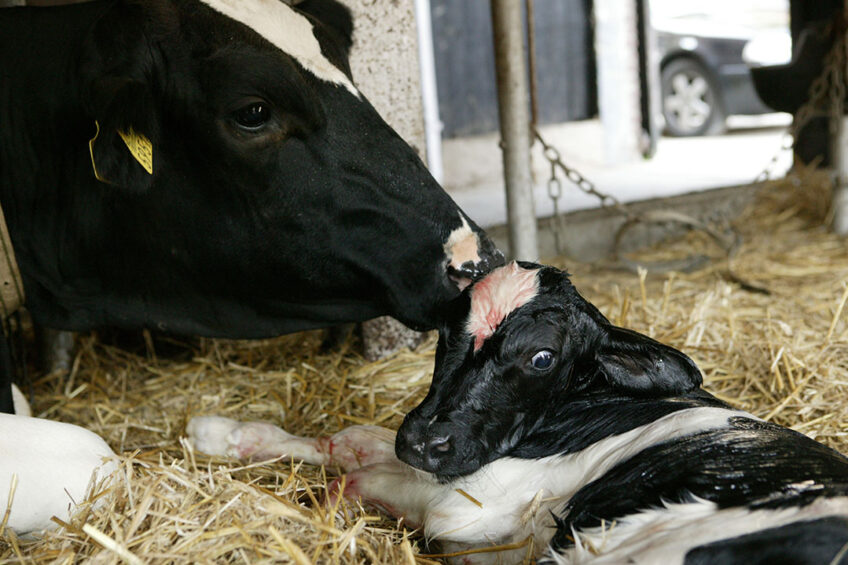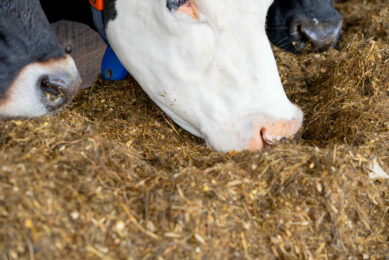Management factors affecting reproductive performance in cows

Here we examine the effects of various management factors on the reproduction of cattle and provide useful tools to mitigate these effects and hence meet a specific reproduction target and/or solve a specific reproduction problem.
Oestrus detection
The most important reason for poor reproductive efficiency is the difficulty of detecting oestrus, especially in large herds. This is due to variations between cows and because there is greater oestrous behaviour at night. The following are useful tips that help detect oestrus.
- Adequate lighting to aid identification.
- Provision of adequate areas with enough space to enable the cows to express oestrous behaviour.
- Covering the floors of the barns with sheets of soft rubber helps increase the efficiency of oestrus detection by increasing the mounting rates, while in the case of hard floors, these rates are lower due to the fear of slipping.
- A routine of at least 3 x 20-30 min observation periods throughout a 24-hour period, at times other than milking, e.g. 08h00, 14h00, and 21h00, the last time being the most important.
- Use of oestrus detection aids, including pedometers, to measure increased walking in cows in heat, physical and chemical changes in vaginal mucus, and measurement of progesterone in milk. Attachment of a chin ball marking device to a cow treated with testosterone or a bull surgically altered to prevent copulation also aids detection of oestrus.
Time to breed
The highest fertility occurs when cows are bred during the final 10 hours of standing heat or within the first 6 hours after standing heat ends. Thus, cows first observed in standing oestrus during the morning should be bred in the afternoon of that day, whereas cows first observed in standing heat in the afternoon should be bred in the morning of the following day.
Care of the post-partum cow
The uterine defence against disease may be reduced at parturition. Thus, providing a clean and comfortable box stall is important to minimise stress at parturition. The cow should be allowed to stay there for at least a day after calving but need not be isolated from the main herd for a prolonged period, provided she is healthy. After each use, the box stall should be cleaned, and if disease is suspected, the stall should be disinfected.
Calving to the first service interval
In general, the sooner cows are served after calving, the lower the pregnancy rate will be, but the shorter the calving interval will be. The effects of the number of days from calving to first insemination on the pregnancy rate, calving to conception interval and the culling rate are shown in Table 1. It is, therefore, not advisable to serve cows as soon as possible after calving because:
- All cows need time to replenish body reserves in early lactation – cows served at less than 35 days are less fertile.
- First-calved cows require time to establish themselves in the herd before a second pregnancy is established.
- It may have a deleterious effect on the calving pattern.
- Annual milk sales and lactation yields of high-yielding cows may be reduced if they calve at intervals much less than 365 days.
Management of poor libido
Libido varies greatly from breed to breed and within breeds. Generally, beef bulls, which are phlegmatic, have poorer libidos than dairy bulls. The following factors may be responsible for poor libido:
- Age: Libido declines in old bulls.
- Bullying: Young bulls, in particular, can be subjected to extensive bullying by groups of cows and heifers. This can have short-term and long-term effects on libido.
- Boredom: Some variation in the service routine can be advantageous.
- Infectious agents such as bovid herpes virus (IPV) can cause severe inflammation and ulceration of the glans penis and prepuce.
- Other factors such as lack of exercise, noise, distractions, being overweight, severe debility, over-use, and severe pain to the back and the penis can also contribute to libido.
In many cases, the libido problem can be solved by improved husbandry, sexual rest, and detailed clinical examination of general health, especially of the genital system. Bulls with inherently poor libido should not be used for breeding because it is possibly inherited.
Veterinary programme
Any diseases that materially affect the general health of cattle may affect reproductive function, even though they are not genital diseases as such. The most important of these diseases are tuberculosis, foot and mouth disease, and lumpy jaw. Infected females may go into periods of anestrus, may not ovulate, and, if conception has occurred before the infection, may have their pregnancies interrupted in the early stages, ending up with abortion.
In the bull, such diseases may affect libido and interfere with testicular function by having a deleterious effect on spermatogenesis. Therefore, cattlemen should work closely with their veterinarians and health control officials to establish the best possible prevention, control, and treatment programmes for all these diseases.
Nutrition
A low energy intake is probably one of the most common causes of reproductive failure, delayed post-partum oestrus or even prolonged anestrus, lowered conception rates, long calving intervals, and poor calf crops.
Ample supplies of dietary protein are essential for the normal growth and development of young cattle, and if growth is retarded, the age of puberty will be delayed.
Lack of dietary calcium and phosphorus also causes a static condition of the ovaries, resulting in animals failing to show oestrus for long periods.
Vitamins A and D are the only concern for reproduction in cattle. Deficiency results in anestrus, frequent returns to service, abortions, and the birth of weak and stillborn calves in cows, as well as retarded sexual development and spermatogenesis in the bull.
Management under thermal stress
Heat stress is often associated with long oestrus cycles exceeding 26 days followed by a low rate of fertilisation and a high rate of embryonic mortality.
On the other hand, cold stress may not detrimentally affect fertility or foetal condition. If too much reliance is placed on using body energy reserves where the feeding level is insufficient, or protein is deficient, complications such as weak calf syndrome may arise. With the severe reduction in body condition, cows may have reduced lactation potential and may experience delays in rebreeding.
The thermal effects can be mitigated through modification of the microclimate. Providing shades, fans, sprinklers, cold water in summer and windbreaks with adequate litter materials in winter can be of great help.
References are available from the author upon request.
Join 13,000+ subscribers
Subscribe to our newsletter to stay updated about all the need-to-know content in the dairy sector, two times a week.










